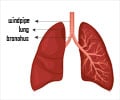By analyzing patient characteristics and the particular bacteria causing some patients to develop pneumonia during hospital stays…
By analyzing patient characteristics and the particular bacteria causing some patients to develop pneumonia during hospital stays , Wake Forest University Baptist Medical Center has developed treatment guidelines to more effectively target the germs.
“We matched the best antibiotic combination to each patient’s characteristics and the particular bugs that we have in our hospital,” said James Beardsley, Pharm.D., lead author of the article in this month’s issue of the journal Chest. “We learned that some of the commonly recommended drugs wouldn’t have worked for many of our patients.”The researchers estimate that antibiotic therapy under the new hospital-specific guidelines will target the correct bacteria in at least 90 percent of cases at risk of being resistant to treatment. If national guidelines were followed, treatment may have correctly targeted the germs in only 70 percent of cases.
Pneumonia is one of the most common hospital-acquired infections. The American Thoracic Society and the Infectious Diseases Society of America joined together to publish national guidelines for treating pneumonia that develops in health care settings, often as a result of patients being on respirators.
Once a patient develops pneumonia, it takes two or three days for laboratory tests to determine exactly what bacteria caused the illness. But treatment must begin right away, so physicians generally use an antibiotic known to be effective against the bacteria that most commonly cause pneumonia. Some patients, especially those who have been in the hospital for several days, are at risk of being infected with bacteria that are resistant to these drugs. This can make it challenging to select the correct antibiotics.
“The choice of which antibiotics to start is very important,” said Beardsley. “They need to cover the germs that are causing the pneumonia in that particular patient. If you’re not right from the start, people are at higher risk of dying.”
To improve the effectiveness of therapy, national guidelines recommend that hospitals base drug selection on the characteristics of the bacteria in their institutions. However, specific recommendations on how to accomplish this are not widely agreed on. Wake Forest Baptist’s report is believed to the first published description of a process using hospital data on infection-causing bacteria to develop institution-specific guidelines for treatment of pneumonia.
Advertisement
The group analyzed each episode of late-onset pneumonia to determine the adequacy of various drug combinations. The goal was to determine which drugs should be used and under what circumstances. They are currently looking at 2006 pathogens to see if the bacteria have changed – which could require an update of the internal guidelines.
Advertisement
“Improper use of antibiotics – whether it is under-dosing, over-use, or prescribing a drug that isn’t effective against the pathogen – hurts our ability to treat the next infected person because resistance can develop,” he said.
Source-Newswise
SRM











